The man who sights the moon in Saudi deserts
few weeks ago, as Abdullah al-Khodairi was travelling along the desert road that connects his small town of Hotat al-Sudeir, in northern Saudi Arabia, to the capital, Riyadh, he asked his friends to pull over. On that windy night, in the pitch darkness, they sat on the sand waiting for the silver moon to rise. For the next hour, Khodairi, armed with pen and paper, recorded the movement of the moon.
The 55-year-old Saudi’s life has long been in sync with the moon. He knows when and how it rises, falls or turns, for Khodairi observes the angles of the shadows that fall on the moon’s craters at every stage in its cycle.
The moon, he says, is his life. As well as being an object of fascination, it offers him a daily reminder of God’s greatness. “No one can really capture the magnificence of the universe unless you follow the orbits as they move in the sky in an immaculate system, with each orbit having a precise path,” he explains.
But as the Islamic month of Ramadan, when Muslims around the world fast during daylight hours, nears, Khodairi begins to feel the weight of the world on his shoulders. Entrusted by Saudi authorities with observing the new crescent, which signals the beginning of Ramadan, his understanding of the moon helps to determine when many of the world’s Muslims begin their fast.
A
The new moon
The rotation of the moon around the earth drives the Islamic or Hijri Calendar. The lunar month lasts 29.5 days. A new moon is born when it becomes perpendicular between the sun and the earth. At that point, called ‘conjunction’, the moon is completely invisible to us because all of the sun’s radiation is reflected back by the moon and none reaches the earth. The time passed after the moment of conjunction is called the age of the moon. Once the moon is visible, the month of Ramadan is declared.
A new moon: the first crescent after conjunction
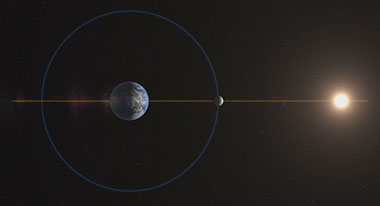
Wrong sighting:
The crescent sets before the sun

True sighting:
The crescent sets after the sun

Images: Vista Rasch
In order to declare the beginning of Ramadan, Saudi Arabia depends on the testimonies of Khodairi and others like him as to whether or not they have spotted the moon. The Judicial High Court makes a decision on when Ramadan begins based on the testimonies it receives.
A number of countries follow Saudi Arabia, meaning that the testimony of Khodairi can determine when tens of millions of Muslims will fast.
“Only God knows the amount of pressure that falls on me.
It’s a responsibility that no one can imagine,” Khodairi says.
Khodairi’s venture into the world of astronomy was inspired by a nomadic childhood in the deserts of Saudi Arabia. With no electricity in his household until his high school years, Khodairi learned to observe the changing radiance of the moon.
“Until 1398 Hijri (1978), we depended on small lanterns,” he explains.
His strong sense of direction, he says, was inherited from his father, who was famed for being able to observe and follow the tracks left by animals or people in the sand.
“Whenever livestock was lost, my dad would be called upon to try and find it,” Khodairi remembers. “He was a well known guide in the desert, often accompanying people from the village to the holy city of Mecca.”
He recalls climbing a sand hill with his father and grandfather in 1399 Hijri (1979), when he was in highschool, observing the moon and then running back to his family to declare the beginning of Ramadan before the radio did.

Abdullah al-Khodairi in the Saudi desert (Image: Abdullah al-Khodairi)
In 1404 Hijri (1985), when Prince Sultan Bin Faisal, a cousin of the Saudi king and an astronaut, declared the end of Ramadan after claiming to have seen the new moon from his vantage point aboard the Space Shuttle Discovery, 350km above the earth, Khodairi’s fascination with astronomy skyrocketed.
While he only had the opportunity to study physical education at the local college, he read every astronomy book that came his way and sought the help of three professors at King Saud University in Riyadh.
Khodairi is now the head of the observatory at Majmaah University in Hotat al-Sudair and the author of a number of books on the moon, astronomy and Islam.

Average hours each region will fast during Ramadan.
But despite his knowledge of astronomy, science and moon calculations, the scholar maintains that seeing the moon with the naked eye should be the criterion for declaring the start of a new month. This, many religious authorities say, has been the tradition since the times of the Prophet Muhammad.
For those who opt for the most literal interpretations of sayings attributed to the prophet, mere cloud cover can prolong the fast by another day.
This, says Sharaf al-Sufiani, the head of the Horizons Society for Space Sciences in Jeddah, has meant that the declaration of Ramadan has been haphazard on many occasions.
"Sometimes the moon was declared visible when it was astronomically impossible to declare it visible," he insists.
“I don’t see why we have to depend on people in the desert when astronomy can accurately tell the time of birth of the new moon with the accuracy of seconds, whether the crescent will be visible or not.”
A scientific approach
The actual visibility of the crescent depends on factors like atmospheric conditions, cloudiness, and most critical of all, the distance between the sun and the moon on the horizon.
If the sun and the moon are too close to each other, there is a high chance that the moon will be invisible because of the glare caused by much brighter sunlight.
Achmed Rasch, the 35-year-old managing director of Vista Rasch GmbH, the company overseeing the launch of an observatory and astronomy exhibition centre in the holy city of Mecca, says studies show that about 80 percent of the time, Saudi Arabia’s declaration of Ramadan has been inconsistent with astronomical calculations.
The observatory centre, built in the enclosure of the Mecca Clock Tower, the largest clock tower in the world, hopes to provide the most accurate crescent sighting through high-end technologies and instruments.

The view from the lunar balcony in the Mecca Clock Tower (Images: Vista Rasch)
A robotic telescope network, lunar telescopes, and an instrument perched on the balcony of the 600-metre-high tower are expected to minimise crescent sighting errors.
The Saudi government-funded observatory is yet to open to the public, pending the approval of the highest authorities.
Although astronomy tells us Ramadan will begin on June 6 this year, Khodairi will still be camping at the top of a hill hours before sunset, waiting to see the silver crescent with the powerful eyesight he inherited from his father.
What will the moon look like this Ramadan?
NASA's Scientific Visualization Studio has calculated the different moon phases based on the position of the moon and the sun. Based on their scientific calculations, the lunar month of Ramadan will be 29 days long. However, the moon should not be visible from Saudi Arabia on the 29th night and so Muslims are expected to fast 30 days this year.
Select a day to the right to see how the moon will look on that night


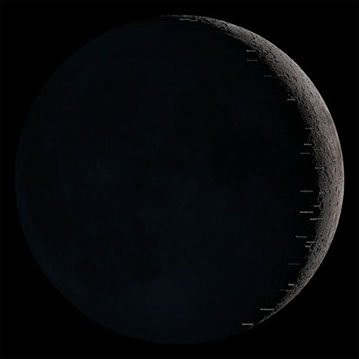
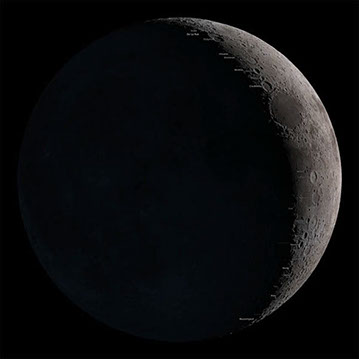








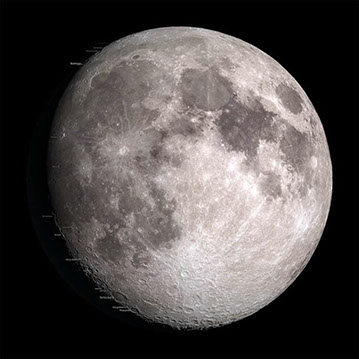


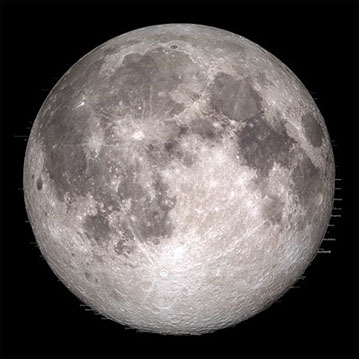














4 - 30
<
>

